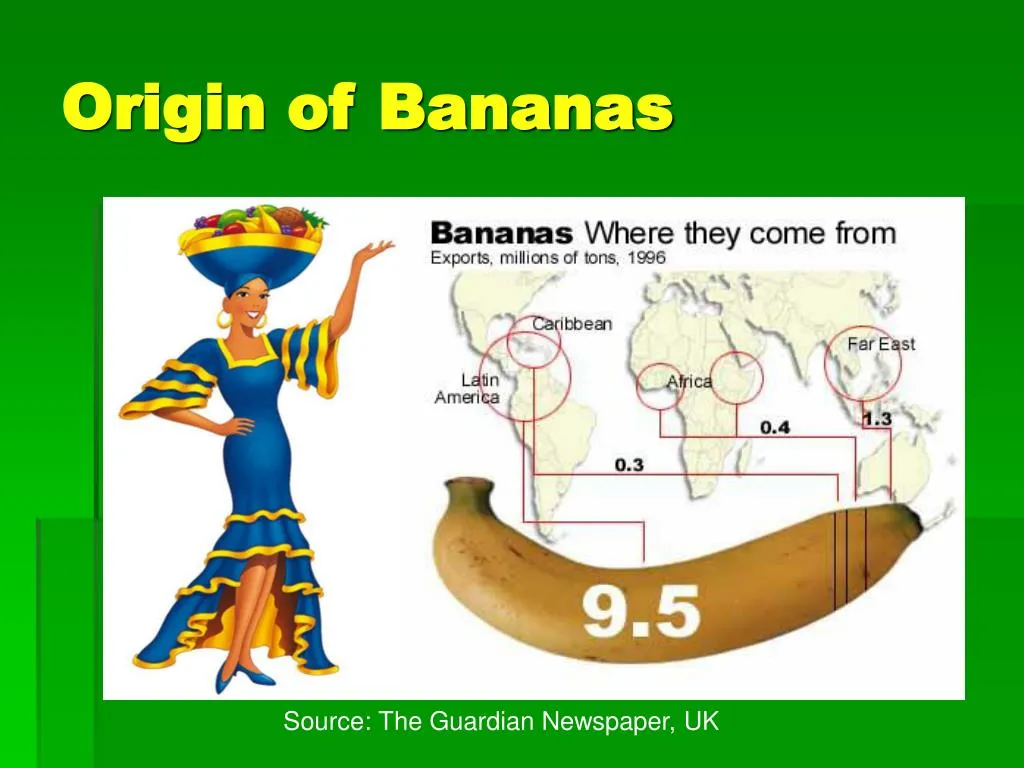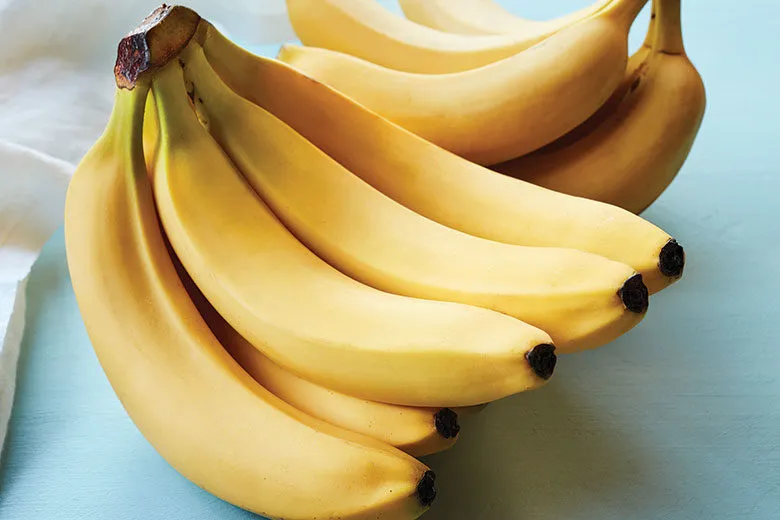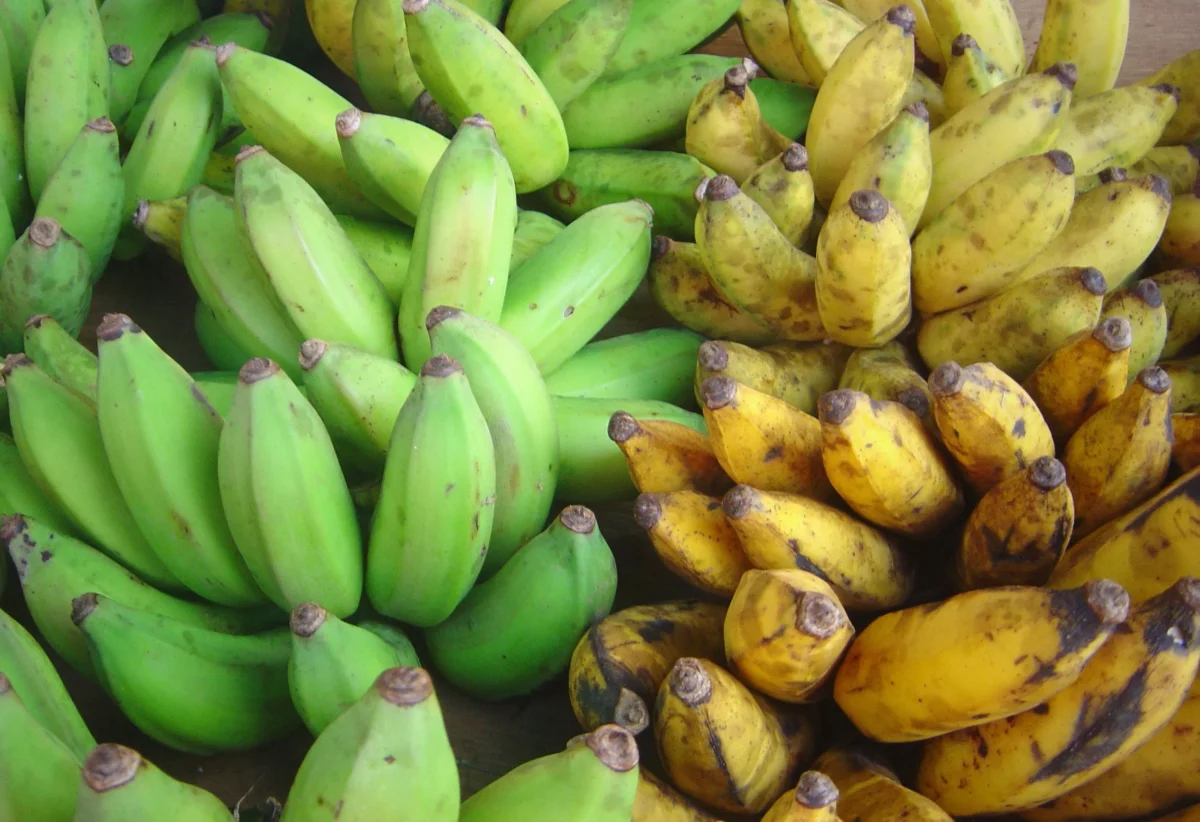Bananas are one of the most beloved and widely consumed fruits in the world, but how much do you really know about their origins? In this article, we will dive into the fascinating history of bananas and explore their different types and where they come from.

Not only will we uncover the impact that banana cultivation and trade have had on global history, but we will also examine modern day banana cultivation and distribution.
For those hoping to expand their knowledge on this tasty fruit, this article is for you! Continue reading to learn more about the fascinating world of bananas.
The history of bananas and its origins.

The history of bananas and their origins is a fascinating tale that spans thousands of years. The first recorded mention of bananas dates back to ancient Greek texts, where they were referred to as “fruit of the wise.” However, it wasn’t until the 15th century that bananas began appearing in European markets, thanks to Portuguese explorers who brought them back from their travels.
The true origins of bananas can be traced back to Southeast Asia, where wild varieties still grow today. From there, they were spread across the globe through trade and colonization. In fact, it was the demand for bananas by European colonizers that led to large-scale plantation farming in places like Central America and the Caribbean.
But with this growth came exploitation and abuse. Banana plantations became notorious for using harsh chemicals and exploiting workers in order to meet demand. It wasn’t until the 20th century that labor laws were put into place to protect workers.
Today, bananas remain one of the most popular fruits worldwide, consumed by millions each day. But their history is a complex one filled with triumphs and tragedies alike. By understanding their past and present impact on our world, we can better appreciate this humble fruit’s journey through time.
The different types of bananas and their origins.
Bananas may seem like a simple fruit, but they actually come in many different varieties with unique origins. From the sweet and popular Cavendish banana to the lesser-known Red banana, each type has its own story to tell.
The most commonly consumed banana is the Cavendish, which originated in Southeast Asia and was first imported to Europe in the 19th century. It quickly became popular due to its consistent size and taste, leading it to become the dominant variety worldwide.
However, there are also many other types of bananas that have their own distinct flavors and uses. The Red banana, for example, has a slightly tangy taste and is often used in desserts or smoothies. It originated from Africa but can now be found throughout Central America as well.
Another unique variety is the Blue Java banana from Southeast Asia. This type of banana has a creamy texture similar to ice cream when fully ripe, earning it the nickname “ice cream banana”. It’s still relatively unknown outside of its native region but is gaining popularity among food enthusiasts around the world.
There are also plantain bananas which are larger than regular bananas and typically used for cooking rather than eating raw. Plantains originate from Southeast Asia as well but are now commonly grown throughout Latin America and Africa.
Whether you’re looking for a sweet snack or an ingredient for your next recipe, understanding the different types of bananas can help you find exactly what you need. So next time you’re at your local grocery store or farmers’ market, consider branching out beyond just the ubiquitous Cavendish – there’s a whole world of deliciously diverse bananas out there waiting to be tasted!
The impact of banana cultivation and trade on global history is immense.

Bananas may seem like a simple fruit, but their impact on global history is anything but. The cultivation and trade of bananas has played a significant role in shaping economies, politics, and even cultural practices across the world.
The banana industry began to take shape in the late 1800s, with companies like United Fruit Company (now Chiquita Brands) dominating the market. These companies used their immense power to shape political policies and shape economies in countries where they operated. This led to exploitation of workers and often resulted in political instability.
However, bananas also had a positive impact on many communities. In regions where they were grown, such as Central America and the Caribbean, banana cultivation provided jobs for local people and contributed to economic growth.
In addition to its economic impact, bananas also played a role in cultural practices across the globe. For example, the popularization of the banana split dessert in America helped cement bananas as an iconic fruit of American culture.
Despite its many impacts on global history, modern-day banana production still faces challenges such as disease outbreaks and climate change. As consumers become more aware of these issues, there is a growing movement towards sustainable farming practices that prioritize environmental stewardship and fair labor practices.
Overall, it’s clear that bananas have had a profound impact on global history – both positive and negative – that cannot be ignored or overlooked by those interested in learning more about this fascinating fruit.

Modern-day banana cultivation and distribution.
« Unlocking the Meanings Behind Dreams of Banana Trees: A Cultural and Symbolic Exploration
Bananas Aren’t Actually Fruits: Here’s Why »
Modern day banana cultivation and distribution have come a long way from their humble beginnings. Today, bananas are one of the most widely consumed fruits in the world, with millions of tons produced and distributed annually.
The success of modern-day banana cultivation can largely be attributed to advancements in technology and farming practices. From genetic engineering to improved irrigation techniques, farmers now have more tools at their disposal than ever before.
One notable development in modern-day banana cultivation is the shift towards more sustainable practices. Many farmers now prioritize environmental stewardship by using organic fertilizers and reducing pesticide use. This not only benefits the environment but also improves the quality of bananas produced.
When it comes to distribution, technological advancements have made it easier than ever for bananas to reach consumers around the world. From refrigerated trucks to shipping containers equipped with state-of-the-art temperature control systems, bananas can be transported long distances without sacrificing quality or freshness.
However, despite these advancements, challenges remain in both cultivation and distribution. Climate change poses a threat to banana crops, while issues such as labor rights and fair trade continue to impact those involved in production and distribution.
Overall, modern-day banana cultivation and distribution are complex topics that require ongoing innovation and consideration for sustainability. By staying informed about these developments, consumers can make more informed choices about what they eat while supporting responsible farming practices around the globe.
Check out our other articles to find out even more about banana.
Banana is an incredibly fascinating fruit, with a long and storied history. From its humble beginnings in Southeast Asia thousands of years ago to its current role as a staple food around the world today, banana remains one of humanity’s most significant fruits. Whether you’re looking to learn more about how bananas were introduced into different cultures or why they’ve become so important to our daily diets, understanding the origin and history of this fruit can provide invaluable insight into our global culture and economy. Check out our other articles to find out even more about banana!
















